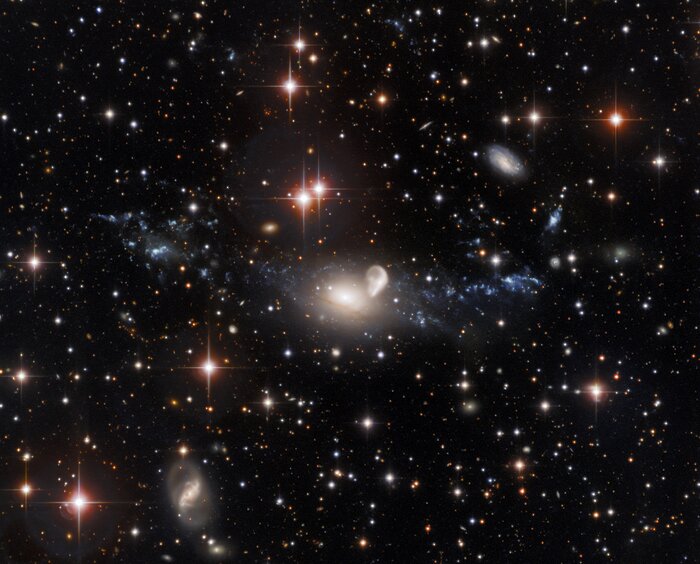NGC 5291
This observation from the SMARTS 0.9-meter Telescope at Cerro Tololo Inter-American Observatory shows the result of a truly spectacular galactic collision. The elliptical galaxy NGC 5291 — the hazy oval cloud at the center of this image — was struck by a careening rogue galaxy over 300 million years ago. The aftermath of this cataclysmic collision is a ring of galactic debris — visible as the tenuous luminous clouds spreading left and right from the golden oval of NGC 5291. This image also shows more gentle galactic interactions — NGC 5291 is interacting sedately with the unusually curved galaxy to the right of it, which is known as the Seashell.
Credit:CTIO/NOIRLab/NSF/AURA
Acknowledgments: Travis Rector (University of Alaska Anchorage), Mahdi Zamani & Davide de Martin
About the Image
| Id: | iotw2051b |
| Type: | Observation |
| Release date: | Dec. 17, 2020, 3:22 p.m. |
| Size: | 1968 x 1586 px |
About the Object
| Name: | NGC 5291 |
| Distance: | 200 million light years z=0.014 (redshift) |
| Constellation: | Centaurus |
| Category: | Galaxies |
Wallpapers
Coordinates
| Position (RA): | 13 47 20.77 |
| Position (Dec): | -30° 21' 59.59" |
| Field of view: | 13.16 x 10.63 arcminutes |
| Orientation: | North is 89.7° left of vertical |
Colors & filters
| Band | Wave-length | Tele-scope |
|---|---|---|
| Optical u | 354 nm | SMARTS–GSU 0.9-meter Telescope CFCCD |
| Optical g | 477 nm | SMARTS–GSU 0.9-meter Telescope CFCCD |
| Optical r | 622 nm | SMARTS–GSU 0.9-meter Telescope CFCCD |
| Optical i | 763 nm | SMARTS–GSU 0.9-meter Telescope CFCCD |

